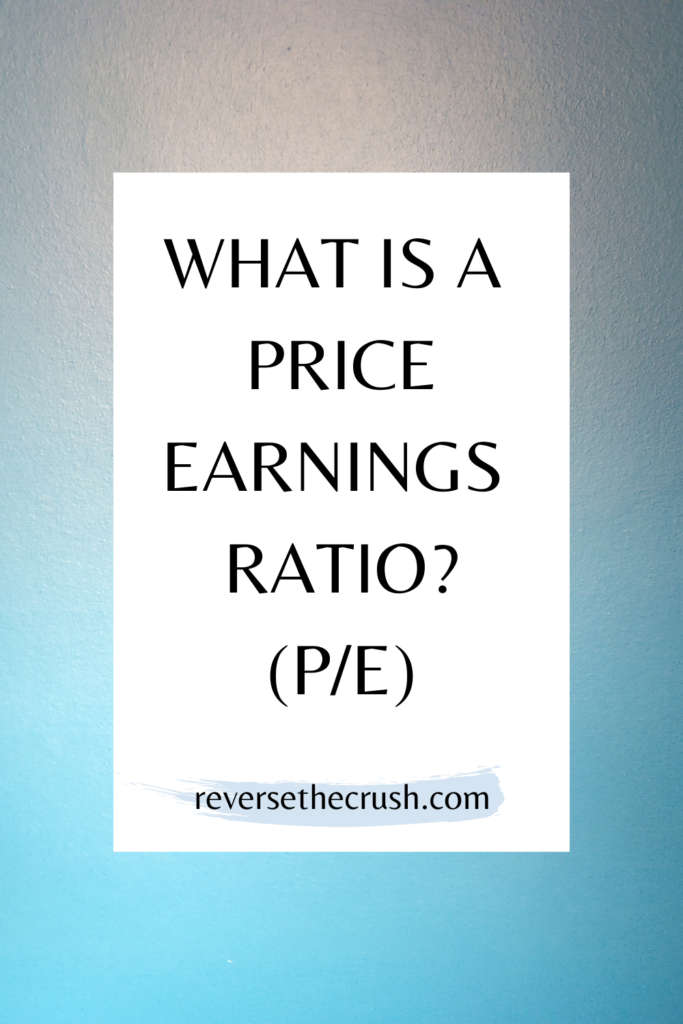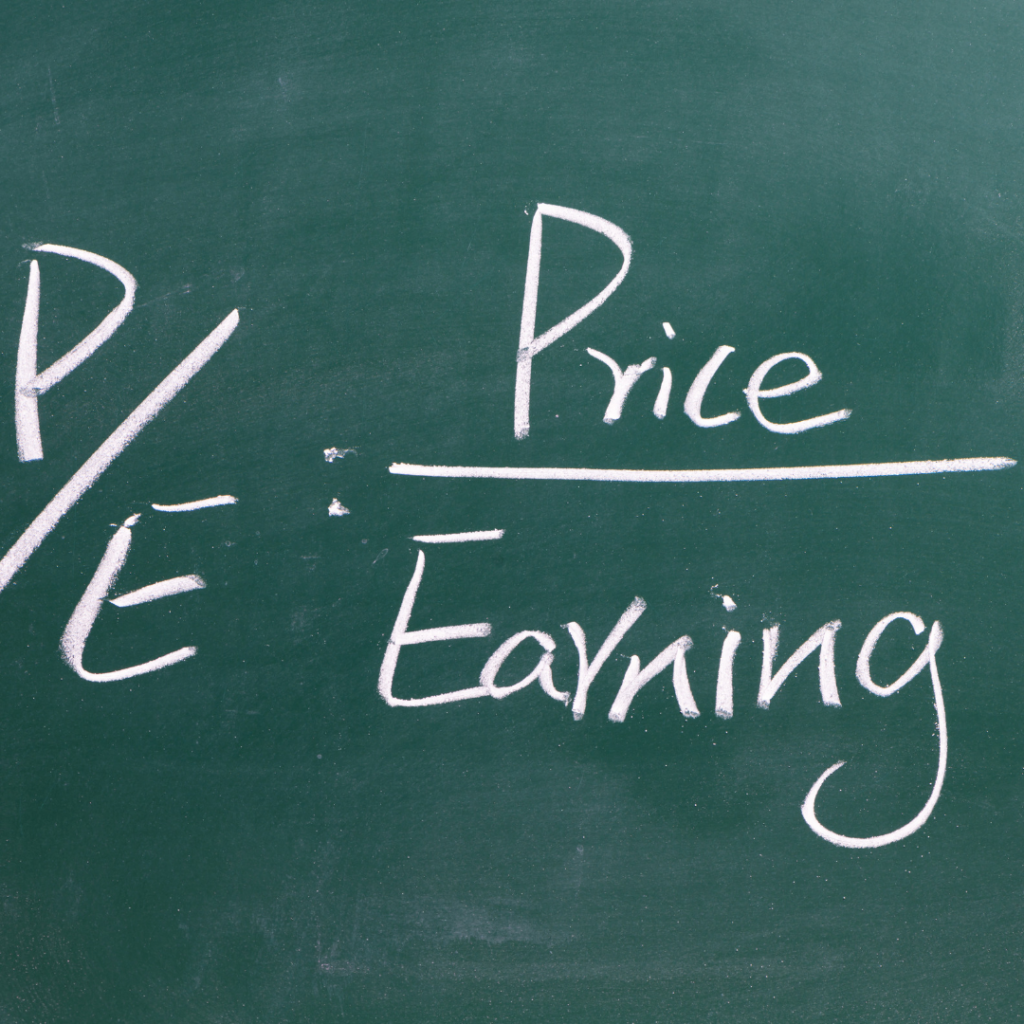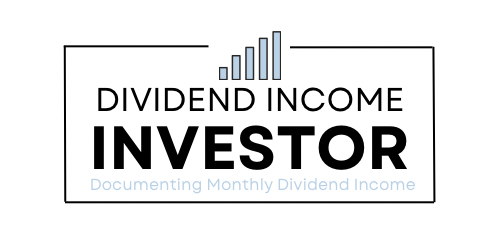What Is A Price Earnings Ratio? (P/E) — A brief overview of the price earnings ratio to help equip you with another tool to value stocks. I am not a licensed investment advisor and this article is not investment advice.
The primary goal for investors is to buy a stock at a low enough price to make money at some point in the future.
Of course, that is easier said than done.
Fortunately, investors have various tools available to help determine what a low enough price is to buy a stock at.
The most common ratio that investors look at is the price to earnings ratio (P/E).
If you are a new investor, you are likely wondering what is a price earnings ratio?
In this post, I will share a brief overview of the price earnings ratio to help equip you with another tool to value stocks.
Let’s dive in.

What Is A Price Earnings Ratio? (P/E)
Simply put, a price earnings ratio (P/E) is a calculation investors can use to figure out if a stock is trading at a high price or low price relative to its earnings.
In other words, it helps investors analyze the valuation on a stock.
If a stock is trading at a low P/E ratio, it could mean that the stock is undervalued by the market. However, it could also signal that a stock is a value trap.
Alternatively, if a stock has a high P/E ratio, it usually means the stock is overvalued. In some cases, “growth stocks” will trade at higher price to earnings multiples because investors expect earnings to rise dramatically. Essentially investors are willing to pay for future earnings. For instance, investors are willing to pay a higher price to earnings ratio for Tesla since they believe it will lead to long-term growth.
What Is A Price Earnings Ratio? (P/E)

P/E Formula
The P/E formula is really quite simple.
You just divide the price by the earnings per share.
So, you just need to know the companies earnings per share (EPS) and the stock price.
If you lookup a quote for a stock using your stock broker, usually the EPS will be listed as well.
How To Calculate P/E
Now that you know where to find the information for the formula, it’s time to calculate the P/E ratio.
To calculate the P/E, you just divide the price of a share by the earnings per share. (Price/Earnings = P/E ratio).
Let’s look at Meta (Ticker: FB) as an example.
Currently, the price of one share of FB is $202.97. The earnings over the last twelve months are 13.7866 per share.
To calculate the P/E, you simply divide 202.97 by 13.7866, which works out to 14.7 (202.97/13.7866 = 14.7).
In other words, Meta shares are trading at 14.7 times earnings, which is historically cheap by the way.
Related: Investing In Facebook Stock (Meta Stock FB) — Why I’m Investing
How Important Is A P/E ratio?
The price to earnings ratio is an important metric that investors can use to value a stock.
As I alluded to earlier, it tells investors if a stock is undervalued or overvalued.
As such, knowing the P/E ratio is very important.
However, it’s not the only metric investors should base investment decisions on. There are other important investment metrics to determine if a stock is overvalued or undervalued.
Other ways to value a stock include analyzing the price to book ratio (P/B), book value, or the net current asset value.
I’m not going to go into too much detail on those other calculations in this post. But just keep in mind that there are alternative ways to determine a stock’s value. The price to earnings ratio is just one of the methods investors have at their disposal.
Related: Investing Metrics For Research On Stocks — 10 Key Metrics
What Is A Good P/E ratio?
Personally, I try to buy stocks that are trading at less than 15 to 20 times earnings. This is based on concepts I learned from Ben Graham from The Intelligent Investor.
Most of my highest returning stocks were purchased under 15 times earnings.
Although it is difficult to claim with absolute certainty what a good P/E ratio is, because it varies in different industries, my simple answer would be 15 to 20 times earnings.
But instead of taking my opinion, let’s look at a quote straight from The Intelligent Investor by Ben Graham. Most of what I know about valuing stocks was learned from him.
“The investor should impose some limit on the price he will pay for an issue in relation to its average earnings over, say, the past seven years. We suggest that this limit be set at 25 times such average earnings, and not more than 20 times those of the past twelve-month period.” — Ben Graham
Based on the opinion of one of the greatest investors of all time, a good P/E ratio is 20 times earnings over the last twelve months, or up to 25 times earnings over the past seven years.
What Is A High P/E Ratio?
If a good price earnings ratio is 20 to 25 times earnings, then a high ratio must be anything above that.
So for more defensive investors, as Ben Graham would put it, anything above 25 times earnings is too high of a price to pay for a stock.
But as I mentioned above, investors are willing to pay higher P/E ratios for “growth stocks.”
So in some cases, a stock that is rapidly expanding earnings could trade at a higher multiple.
In these cases, investors can also analyze other metrics such as price to sales (P/S) to better understand if a company is overvalued or undervalued.

Final Thoughts
In summary, a price to earnings ratio (P/E) is a calculation investors can use to determine if a stock is undervalued or overvalued.
To calculate the P/E, you just divide the price of a share by the earnings per share. (Price/Earnings = P/E ratio).
Although the P/E is an important investment metric, there are other ways to value a stock.
Ideally, investors should attempt to buy stocks when they are trading at less than 20 times earnings.
According to the author of The Intelligent Investor, Ben Graham, a stock trading at over 20 to 25 times earnings is overpriced.
Therefore, it would be best for investors to look elsewhere or hold off buying a stock that is overvalued. Wait for a pullback.
Of course, it depends on risk tolerance, time frame, and how fast a company is growing.
But at the end of the day, the main goal of investing is to buy undervalued stocks that appreciate in value.
As such, most investors are likely better off following Ben Graham’s advice.
Similar Articles On Investing To Check Out
Investing Metrics For Research On Stocks — 10 Key Metrics
Keys To Investing In The Stock Market
Best Websites For Stock Research — 6 Websites To Analyze Stocks
I am not a licensed investment or tax adviser. All opinions are my own. This post may contain advertisements by Monumetric. This post may also contain internal links, affiliate links to BizBudding, Amazon, Bluehost, and Questrade, links to trusted external sites, and links to RTC social media accounts.
Connect with RTC
Twitter: @Reversethecrush
Pinterest: @reversethecrushblog
Instagram: @reversethecrush_
Facebook: @reversethecrushblog
Email: graham@reversethecrush.com


 How To Earn $100 A Month In Dividends
How To Earn $100 A Month In Dividends
